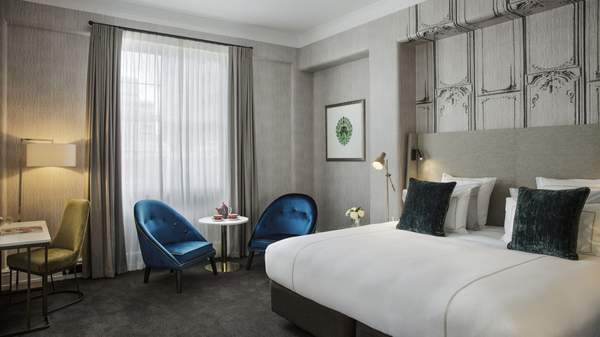Overview
I remember it when it was virtually abandoned. Windsor House was long, narrow and curious; an unloved 10-storey building that sat like a toppled cassette at the bottom of Queen Street in Auckland. With its once splendid early 20th century exterior (complete with miniature balconies) and marbled lobby, it seemed like such a waste.
Sometimes in my late teens I'd sneak inside and climb the winding staircase to get different views over the central city. From the sweep of the stairs up from the ground floor you could tell this relic from the late 1920s had once been something special. And yet here it was, a historic building on prime real estate in our largest city, and it was home to little more than wandering students (myself), a shop or two and the odd homeless person.
Fast-forward about 15 years and I'm staying here for my wedding. Even just a couple of years earlier this would've been odd as Windsor House had evolved from its near-empty days when I was a student to being a spectacularly underwhelming 3-star hotel. Not exactly the place to make your new bride weak-kneed, even if the building the hotel occupied was so much cooler than the hotel itself.
Then one day in mid-2017 I was on Queen Street and noticed a temporary reception out the front of Windsor House. The Hotel Grand Windsor was undergoing a room-by-room, multi-million dollar refurbishment. No more 3-star blandness. Indeed, the Hotel Grand Windsor was in the process of becoming the best luxury, historic boutique hotel Auckland's never had and with a fully-fledged 5-star rating too.
Finding out the refurb would be done by the time of our early October wedding, I asked to see one of the finished rooms. A pleasantly distant cry from the sneaking around I'd done as a teen, this was an actual tour. With the property stretching from Queen Street at the front, right the way to Fort Lane at the back, it hit me why this thin, elongated building had always captivated me. It's really the same concept as why I love Singapore. Having a small, limited and even awkwardly-shaped space is either a weakness or something that forces you to be creative. In Singapore's case, an island the size of Lake Taupo and a population almost double New Zealand's is somehow green to the point of being beautiful. The innovation is everywhere you look and while no space is wasted, there are trees and parks everywhere.
Apply that principle to an early New Zealand skyscraper no wider than a few metres that you're converting into a high-end hotel and the restrictions of area can be your friend. In the case of Hotel Grand Windsor, almost none of the 79 rooms and suites are exactly the same. Some have sloping walls or an inner courtyard to contend with. Others are rectangles, some more square. The smallest rooms are positively small at 19 sqm, while the premier suites get as comfortable as anything from 36 to 51 sqm. And irrespective of size, all are exquisitely presented.
Celebrating the status of Windsor House as an almost 100-year old heritage-listed structure, every detail at the hotel is done to hark back to pre-World War Two ideas of opulence. From the main chandelier in the lobby that reportedly took days to assemble, the shine of the marble, the old-fashioned glamour of the lifts to the mini-lounges on each floor, this is a glorious step back in time.
The cushions, chairs and couches (as well as the tea sets) in the rooms are done in rich colours with themes chosen based on jewellery. On learning my fiancée's engagement ring was an oval aquamarine stone, the staff member giving me the tour suggested that could also be the colour scheme and artwork of the room they'd offer us. How could we say no?
Staying at the hotel after so many years of thinking "what if" for Windsor House, I finally learned something about its history. The decaying building I knew from my student days in the early 2000s was one of the first high-rises constructed in New Zealand when completed in 1928. While it wasn't a hotel in those days, in addition to offices it had a restaurant, tea-rooms and soda-fountain of such poshness that the chief tenant Cooke's felt comfortable advertising its facilities as the finest in all of New Zealand. They even boasted that the fit-out of Cooke House, as it was then known, resembled "nothing so much as a luxury liner".
It somehow survived the Depression, but the building was sold in 1946, beginning a 70-year period of unremarkable usage for shops, offices and a budget hotel. Not anymore.
